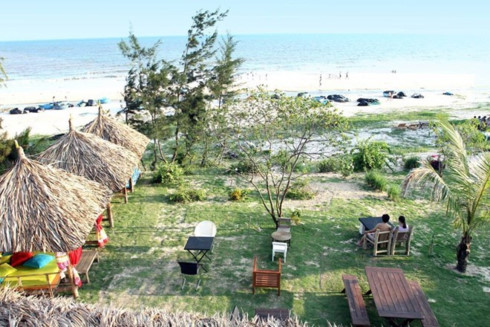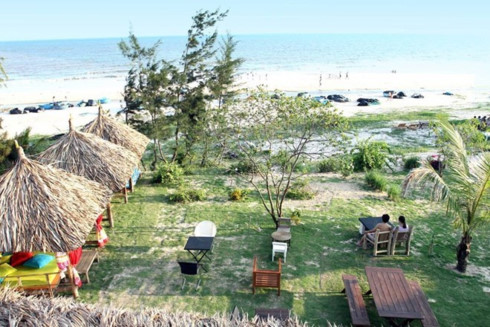
The south central coastal province of Binh Thuan aims to develop sustainable tourism to become a national and regional tourism attraction.

Apart from deploying measures to diversify tourism services,
enhance quality and promote its images, Binh Thuan focuses on boosting
cooperation and connectivity in tourism.
According to Director of the provincial
Department of Culture, Sports and Tourism Ngo Minh Chinh, the province will
continue to work with other localities, including Ho Chi Minh City, Lam Dong,
Hanoi, Can Tho to bring more domestic and international visitors to
destinations in Binh Thuan.
In addition, improving transport
infrastructure is an advantage for Binh Thuan’s tourism. The expanded National
Road 1A section running through the province was completed, the construction of
Phan Thiet airport and Vinh Tan port is undergone while the Dau Giay – Phan
Thiet highway building project will be launched.
According to Nguyen Duc Hoa, Vice Chairman of
the provincial People’s Committee, Binh Thuan is a key national tourism
destination, with tourism services including resorts, landscapes, sports,
spiritual tours and MICE tourism.
The sector contributed about seven percent to
provincial GRDP in 2016 and creates thousands of jobs, particularly in rural
and coastal areas.
Binh Thuan also has good conditions for
socio-economic and cultural exchanges with localities in the southeast, south
central and Central Highlands regions. The province also sits among southern
tourism hubs, namely Nha Trang in Khanh Hoa province, Da Lat in Lam Dong, HCM
City, Ba Ria – Vung Tau province.
It has
192 kilometres of
coast with beautiful beaches, landscapes, clean environment, national
historical – cultural relics and festivals.
Binh Thuan had by October had 390 tourism projects, worth
VND63.5 trillion (US$2.79 billion), covering
7,400 hectares.
It is home to more than 300 hotels, with
11,000 rooms and over 500 villas and apartments for tourists.
In 2016, the province received 4.5 million
tourists, including 300,000 foreigners.
It expects to welcome
around seven million tourists by 2020, contributing 10% to provincial GRDP.
Source: VOV
Located just a 20-minute drive from Hoa Binh City, Ora Hill Farmstay & Glamping Hoa Binh is a captivating new destination nestled in Mo hamlet, Bình Thanh commune, Cao Phong district. Combining farming with leisure, this tranquil retreat is perfect for those seeking balance, joy, and an immersive experience in the expansive beauty of nature.
Muong Bi - Tan Lac is renowned as one of the four famous Muong regions in Hoa Binh province. Blessed by nature with a favourable climate and stunning landscapes, Tan Lac holds great advantages for tourism development. The local tourism industry has made remarkable strides in recent times thanks to the attention and support from the local authorities and sectors.
With its strategic location, well-developed transport network, and diverse soil and climatic conditions, Hoa Binh is emerging as a must-visit destination in Vietnam's northwestern tourism corridor. The province boasts numerous attractions, including the Kim Boi hot springs (Kim Boi district), the Dau Rong cave complex (Cao Phong), the Mai Chau valley (Mai Chau), and the iconic Hoa Binh hydropower plant.
The northern mountainous province of Hoa Binh has been listed among the 71 most beautiful places to visit worldwide by the prestigious US travel magazine Condé Nast Traveller.
Hoa Binh province’s rich natural and cultural resources position it as a prime location for developing community-based tourism (CBT). In recent years, support from central and provincial policies, as well as assistance from non-governmental organisations, have encouraged local ethnic minority and mountainous communities to actively engage in the sector.



